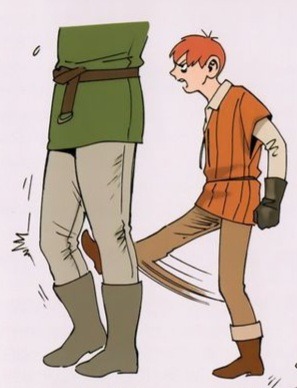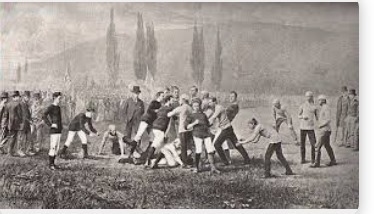#neurones
Explore tagged Tumblr posts
Text
De la pensée à l'action : décryptage du voyage neuronal ! ⚡️
Vous avez toujours rêvé de comprendre comment votre cerveau transforme une simple envie en un mouvement précis ? Plongeons ensemble dans les méandres de votre système nerveux pour percer les secrets de la motricité volontaire !

Du cortex frontal à la plaque motrice : un ballet neuronal
Lorsque vous décidez de lever votre main pour saluer, un véritable orchestre neuronal se met en branle :
Le cortex moteur primaire : C'est ici, dans le lobe frontal, que naît l'impulsion motrice. Les neurones de cette zone envoient des signaux électriques précis, comme une partition musicale, pour indiquer aux muscles quel mouvement effectuer.
La voie pyramidale : Ces signaux électriques empruntent ensuite la voie pyramidale, un faisceau de fibres nerveuses qui relie le cerveau à la moelle épinière. C'est un peu comme un autoroute qui relie la capitale (le cerveau) aux provinces (le reste du corps).
La moelle épinière : Arrivés à destination, les signaux sont relayés aux motoneurones, de véritables messagers qui transmettent l'ordre de contraction aux muscles.
La jonction neuromusculaire : Au niveau de la plaque motrice, la rencontre entre le nerf et le muscle déclenche une réaction chimique qui provoque la contraction musculaire. C'est comme allumer une mèche pour faire exploser un feu d'artifice !
Mais ce n'est pas tout !
D'autres régions du cerveau jouent également un rôle crucial :
Le cortex prémoteur: Il planifie et organise les séquences de mouvements complexes.
Les ganglions de la base: Ils régulent l'initiation et l'amplitude des mouvements.
Le cervelet: Il assure la coordination, l'équilibre et la précision des mouvements.
Et saviez-vous que...
Les réflexes sont des mouvements involontaires, rapides et stéréotypés, qui ne passent pas par le cortex cérébral.
Les lésions de certaines zones du cerveau peuvent entraîner des troubles moteurs, comme la maladie de Parkinson ou la sclérose en plaques.
Les neuroscientifiques utilisent des techniques d'imagerie cérébrale (IRM, EEG) pour étudier l'activité cérébrale pendant le mouvement.
Pour aller plus loin
#neurosciences#cerveau#mouvement#physiologie#anatomie#science#corpshumain#sante#medecine#cortexfrontal#voipyramidale#moelleepiniere#plaquemotrice#neurones#contractionmusculaire#cerveau humain#système nerveux central#neurologie#motricité volontaire#réflexes#maladies neurodégénératives#neurosciences cognitives
0 notes
Text

Poppy playtime is good cause it has Yarnaby,,,
#myart#chloesimagination#comic#fnaf#five nights at freddy's#fnaf fanart#yarnaby#mangle#ppt#fnaf 2#poppy playtime chapter 4#poppy playtime#I really just wanted to draw Yarnaby again#Yarnaby unlocks the same neurons in my mind that mangle does#where they become less scary and more omgg what a cutie!!!#‘I’m so sigma and awwwwww’ reaction#poppy playtime is officially good cause it has yarnaby#Yarnaby and mango!!! 🩷🩷🩷
8K notes
·
View notes
Text




cooked an au while i was sick and i fear it has rotted my brain already
#bg3#baldur's gate 3#astarion#tavstarion#tav#shadowheart#teenager astarion is making me emotional he looks so squishy#i am a 'blonde astarion who went grey in his 20s' truther#idk what it is about ice-adjacent sports that scratch my brain#also i can't remember which one but one of the bloodweave fics someone sent me that i bookmarked had figure skater astarion#and it just crept into my neurons. it's such a concept i'm obsessed with it
3K notes
·
View notes
Text

They bonding here


#they fwens#they share the same neurone#dungeon meshi#chilchuck#chilchuck tims#namari#namari of kahka brud#dunmeshi#delicious in dungeon
16K notes
·
View notes
Text

seabass 🎸
#saw these photos of pete wentz#neuron activation#“is that the-”#"the squier pete wentz signature precision bass? yeah#stardew valley#sdv#sdv sebastian#stardew valley fanart#stardew fanart#stardew sebastian#sdv fanart#fanart#my art#pete wentz#salmonart
14K notes
·
View notes
Text


sobbing.....her little brother is her guardian angel
#sorry you gotta deal with me posting shadow a little longer. not sorry#that scene was everything to me.....the wings and their movement activate all my neurons theyre beautiful#fucked up body horror but still shaped like bird wings#cant describe how much i love them#this game is everyhting to me oguhhghh#sonic#sonic x shadow generations#sonic x shadow generations spoilers#spoiler#shadow the hedgehog#maria robotnik#gerald robotnik#wings
5K notes
·
View notes
Text

🏰🌞☁️
#I hope they’re in shrek 5#The GRIP dragon had on my child psyche#I had a toy of her because I’d begged my grandma for it for my b day HAHAHA#also the dronkeys rearranged my neurons#I can’t remember if I wanted one as a pet or if I wanted to be one but either or both is likely
2K notes
·
View notes
Text
Rôle du stress oxydatif et du système glutathion dans la perte de neurones dopaminergiques due à une altération du métabolisme énergétique
Role of oxidative stress and the glutathione system in loss of dopamine neurons due to impairment of energy metabolism
Papel del estrés oxidativo y del sistema del glutatión en la pérdida de neuronas dopaminérgicas debida a la alteración del metabolismo energético
#stressoxidatif#oxidativestress#estresoxidativo#glutathion#glutathione#glutation#neurones#neurons#neuronas#neuronesdopaminergiques#dopamineneurons#neuronasdopaminérgicas#metabolismeenergetique#metabolisme#EnergyMetabolism#energy#metabolismoenergetico
0 notes
Text
Barbecue sauce and fried neurones

0 notes
Text

The Research Manuscripts of S. Sunkavally, p 717.
#neurones#habituation#Gulf Coast States#cyanobacteria#soda lakes#mutation rate of the Y-chromosome#pleiotropy#promiscuity#epicanthic flap#Brigham Young#antibodies#mutation rate in the male#testosterone as a mutagen#North Sea#bacterial population#bacterial population density#satyendra sunkavally#manuscript#handwriting
0 notes
Text
Le vieillissement du cerveau : comprendre et agir
Notre cerveau, cet organe complexe et fascinant, subit au fil du temps les effets du vieillissement. Bien que ces changements soient inévitables, il est possible de les ralentir et de préserver au mieux ses fonctions cognitives.

Les mécanismes du vieillissement cérébral
Le vieillissement cérébral se manifeste par plusieurs phénomènes :
Diminution du volume cérébral: Le cerveau perd progressivement des neurones et des connexions synaptiques.
Ralentissement des fonctions cognitives: La mémoire, l'attention, la vitesse de traitement de l'information et la capacité à apprendre de nouvelles choses peuvent être affectées.
Modifications des neurotransmetteurs: Les substances chimiques qui permettent la communication entre les neurones sont moins efficaces.
Les facteurs influençant le vieillissement cérébral
L'âge: Le vieillissement est le facteur le plus important, mais il n'est pas le seul.
La génétique: Certains gènes peuvent prédisposer à un vieillissement cérébral plus rapide.
Le mode de vie: L'alimentation, l'activité physique, le sommeil, le stress et les stimulations cognitives jouent un rôle crucial.
Les maladies: Certaines maladies, comme l'hypertension, le diabète ou les maladies cardiovasculaires, peuvent accélérer le vieillissement cérébral.
Les conséquences du vieillissement cérébral
Le vieillissement cérébral peut entraîner :
Des difficultés de mémoire: Oublis plus fréquents, difficultés à se concentrer.
Des troubles de l'apprentissage: Plus de difficultés à acquérir de nouvelles compétences.
Des problèmes de langage: Difficultés à trouver les mots justes, à comprendre des conversations complexes.
Des troubles de l'humeur: Anxiété, dépression.
Comment préserver son cerveau ?
Bien que le vieillissement soit inévitable, il est possible de le ralentir et de préserver ses fonctions cognitives en adoptant un mode de vie sain :
Une alimentation équilibrée: Privilégiez les fruits, les légumes, les poissons gras et les aliments riches en antioxydants.
Une activité physique régulière: L'exercice physique stimule la production de nouvelles cellules nerveuses et améliore la circulation sanguine dans le cerveau.
Un sommeil de qualité: Le sommeil est essentiel pour la consolidation de la mémoire et la récupération cérébrale.
Des stimulations cognitives: Apprenez de nouvelles choses, lisez, jouez à des jeux de réflexion, participez à des activités sociales.
La gestion du stress: Le stress chronique peut endommager les neurones. Pratiquez des techniques de relaxation comme la méditation ou le yoga.
Des contrôles médicaux réguliers: Surveillez votre tension artérielle, votre cholestérol et votre glycémie.
En conclusion, le vieillissement du cerveau est un processus naturel, mais il est possible d'en ralentir les effets et de préserver ses capacités cognitives en adoptant un mode de vie sain et en stimulant régulièrement son cerveau.
Aller plus loin
#vieillissement cérébral#cerveau#mémoire#cognition#santé cérébrale#neurones#synapses#maladies neurodégénératives#Alzheimer#Parkinson#bien vieillir#santé mentale#mode de vie sain
1 note
·
View note
Text
more of this miserable thing I made, somehow it became A Whole Au… no it does not get any better for them LMAOOOAOAOOA





it’s a father/son descent into madness! im calling it DON’T DO THIS, DAD and it’s mainly about frenzy and soundwave’s extremely ill-omened endeavours to bring rumble back to life. yes rumble is very much around and actively haunting them. no he doesn't consent to this
start
next
#yeah….we are going full resurrection route with this one!!#very much a cliche but i eat it up every time…..#i am a simple woman i see characters trying to bring their loved ones back from the dead i go monkey brain neuron activation#frenzy specifically gets super haunted and sees his bro everywhere#THIS HAS GONE SO FAR FROM THE SOURCE MATERIAL. THHKGHAK;HFHAHGJHA#i dont usually make super angsty stories but this one just clicked for some reason....#humanformers#transformers#soundwave#maccadam#rumble#frenzy#zorangetf#tf art#artists on tumblr#this is.....extremely similar to the story im making for my ocs....they ar ocs at this point....#DON’T DO THIS DAD
2K notes
·
View notes
Text




as usual i love drawing the hw boys with my yuu o(* ̄▽ ̄*)ブ yuus fit (i might change it lol etcetc)

#twisted wonderland#twst#ツイステ#ツイステッドワンダーランド#mmarts#twst oc#twst yuu#skully j graves#yeah wwww#lolitawardrobe my goat#reason i drew a lil kiss cause in the prologue thing my neuron activation activated with he said キス okay#i cant write a correct sentence
4K notes
·
View notes
Text

diaster
#kirby#katfl#kirby and the forgotten land#elfilin#fecto elfilis#my art#something something actions which put into motion cannot be undone.#oh antares? twin stars? diaster? anaphase? say no more.#you're telling me I can include arteries neurones helices and cell division into one piece AND make it about kirby? say no more#elfilis is basically melting into fecto forgo around eflilin#unable to sustain themselves.
1K notes
·
View notes
Text

Goodmorning kiss... ♡ what's with me and kissy narumitsu sketches lately...?
#ace attorney#narumitsu#phoenix wright#miles edgeworth#wrightworth#periwinkla#fanart#these past few days I'm just sketching kisses inbetween other more complex stuff#mostly when I don't have the brains to work on more complex things#like today hahaha#I really don't feel like I have the brains today pft#like it's just a narumitsu kissy mush up there#and there's nothing else going on between the neurons atm
4K notes
·
View notes
